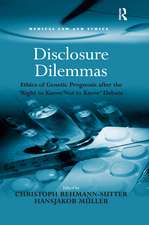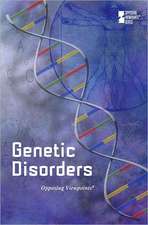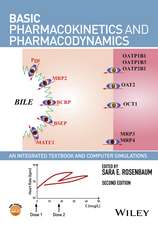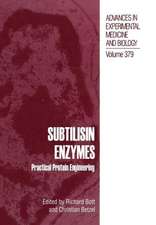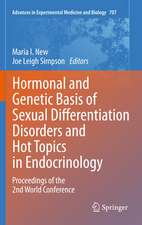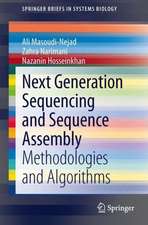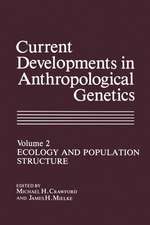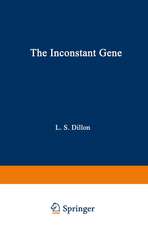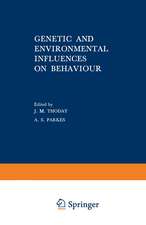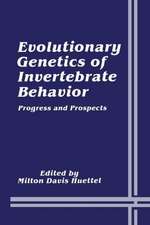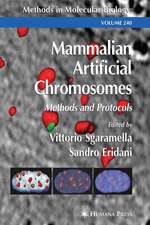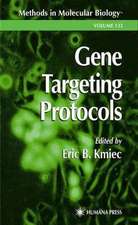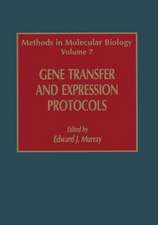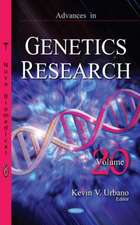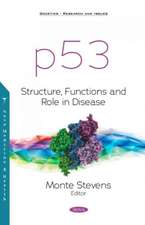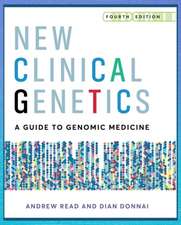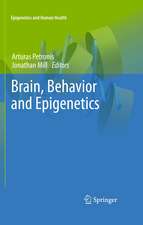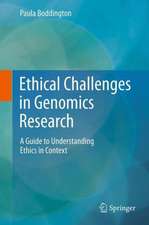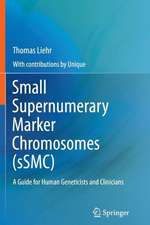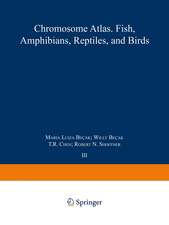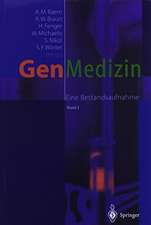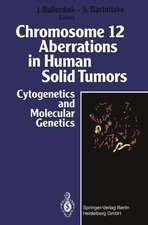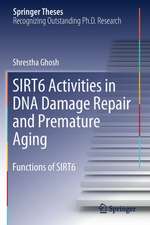Genetic Mosaics and Chimeras in Mammals: Basic Life Sciences, cartea 12
Editat de L. B. Russellen Limba Engleză Paperback – 14 iun 2012
Din seria Basic Life Sciences
- 5%
 Preț: 378.07 lei
Preț: 378.07 lei - 15%
 Preț: 647.73 lei
Preț: 647.73 lei - 5%
 Preț: 383.55 lei
Preț: 383.55 lei - 15%
 Preț: 649.06 lei
Preț: 649.06 lei -
 Preț: 401.03 lei
Preț: 401.03 lei - 5%
 Preț: 736.92 lei
Preț: 736.92 lei - 5%
 Preț: 726.68 lei
Preț: 726.68 lei - 5%
 Preț: 729.26 lei
Preț: 729.26 lei - 18%
 Preț: 960.61 lei
Preț: 960.61 lei - 5%
 Preț: 375.85 lei
Preț: 375.85 lei - 5%
 Preț: 744.05 lei
Preț: 744.05 lei - 5%
 Preț: 740.58 lei
Preț: 740.58 lei - 5%
 Preț: 733.82 lei
Preț: 733.82 lei - 5%
 Preț: 719.38 lei
Preț: 719.38 lei -
 Preț: 397.59 lei
Preț: 397.59 lei - 5%
 Preț: 390.85 lei
Preț: 390.85 lei - 15%
 Preț: 657.57 lei
Preț: 657.57 lei - 5%
 Preț: 382.99 lei
Preț: 382.99 lei - 5%
 Preț: 400.56 lei
Preț: 400.56 lei - 5%
 Preț: 739.69 lei
Preț: 739.69 lei - 15%
 Preț: 657.25 lei
Preț: 657.25 lei - 18%
 Preț: 959.67 lei
Preț: 959.67 lei -
 Preț: 401.24 lei
Preț: 401.24 lei - 15%
 Preț: 658.88 lei
Preț: 658.88 lei - 5%
 Preț: 387.39 lei
Preț: 387.39 lei - 5%
 Preț: 376.95 lei
Preț: 376.95 lei - 5%
 Preț: 768.39 lei
Preț: 768.39 lei - 5%
 Preț: 735.83 lei
Preț: 735.83 lei - 15%
 Preț: 651.19 lei
Preț: 651.19 lei - 18%
 Preț: 1228.47 lei
Preț: 1228.47 lei - 15%
 Preț: 595.36 lei
Preț: 595.36 lei - 5%
 Preț: 736.39 lei
Preț: 736.39 lei - 5%
 Preț: 730.55 lei
Preț: 730.55 lei - 18%
 Preț: 960.30 lei
Preț: 960.30 lei - 5%
 Preț: 738.93 lei
Preț: 738.93 lei - 15%
 Preț: 662.16 lei
Preț: 662.16 lei - 15%
 Preț: 663.60 lei
Preț: 663.60 lei -
 Preț: 395.25 lei
Preț: 395.25 lei - 5%
 Preț: 739.13 lei
Preț: 739.13 lei - 15%
 Preț: 639.59 lei
Preț: 639.59 lei - 5%
 Preț: 377.52 lei
Preț: 377.52 lei - 5%
 Preț: 721.40 lei
Preț: 721.40 lei - 18%
 Preț: 1241.10 lei
Preț: 1241.10 lei - 18%
 Preț: 1233.69 lei
Preț: 1233.69 lei
Preț: 730.71 lei
Preț vechi: 769.17 lei
-5% Nou
Puncte Express: 1096
Preț estimativ în valută:
139.87€ • 151.98$ • 117.56£
139.87€ • 151.98$ • 117.56£
Carte tipărită la comandă
Livrare economică 21 aprilie-05 mai
Preluare comenzi: 021 569.72.76
Specificații
ISBN-13: 9781468433920
ISBN-10: 146843392X
Pagini: 500
Ilustrații: XIV, 485 p.
Dimensiuni: 170 x 244 x 26 mm
Greutate: 0.79 kg
Ediția:1978
Editura: Springer Us
Colecția Springer
Seria Basic Life Sciences
Locul publicării:New York, NY, United States
ISBN-10: 146843392X
Pagini: 500
Ilustrații: XIV, 485 p.
Dimensiuni: 170 x 244 x 26 mm
Greutate: 0.79 kg
Ediția:1978
Editura: Springer Us
Colecția Springer
Seria Basic Life Sciences
Locul publicării:New York, NY, United States
Public țintă
ResearchCuprins
Use of Chimeras and Cell Aggregations to Study Developmental Potency, Gene Expression, Control of Phenotype, and Tumor Origin.- Reversion of malignancy and normalized differentiation of teratocarcinoma cells in chimeric mice.- Viable chimeras produced from normal and parthenogenetic mouse embryos.- Ovarian teratomas in mice are derived from oocytes that have completed the first meiotic division.- Growth control in chimeras.- Attempts at locating the site of action of genes affecting behavior.- Fine structure of cells in embryos chimeric for mutant genes at the T/t locus.- An analysis of differentiation in coaggregation cultures between mouse neuronal and tumor cells.- The use of mosaics and experimental chimeras to study the pathogenesis of neoplasia.- Antibodies to allozymes as potential cell markers for chimeric mouse studies.- Use of Chimeras and Mutational or Disjunctional Mosaics to Study Gamete Differentiation, Sexual Development, and Origin of the Germline.- Reproduction in single-sex chimeras.- Germ cells in XX ? XY mouse chimeras.- Use of the sex reversed gene (Sxr) to investigate functional sex reversal and gonadal determination in mammals.- Why not androgynes among mammals?.- Cell interactions in the sex organs of sex reversed mice heterozygous for testicular feminization.- Spontaneous sex mosaicism in BALB/cWt mice.- Evidence from mutable genes concerning the origin of the germ line.- X Chromosome Inactivation and Derepression.- Bimodal distribution of ?-galactosidase activities in mouse embryos.- Biochemical studies on X-chromosome activity in preimplantation mouse embryos.- Hypoxanthine guanine phosphoribosyl transferase expression in early mouse development.- The direct demonstration of an X-chromosome dosage effect prior to inactivation.- Use ofteratocarcinoma stem cells as a model system for the study of X-chromosome inactivation in vitro.- The stability of X-chromosome inactivation: studies with mouse-human cell hybrids and mouse teratocarcinomas.- Studies of human-mouse cell hybrids with respect to X-chromosome inactivation.- X-Chromosome Nonrandomness: Imprinting, Selection.- Preferential inactivation of the paternally derived X chromosome in mice.- Preferential expression of the maternally derived X chromosome in extraembryonic tissues of the mouse.- In search of nonrandom X inactivation: studies of the placenta from newborns heterozygous for glucose-6-phosphate dehydrogenase.- The use of mouse X-autosome translocations in the study of X-inactivation pathways and nonrandomness.- Selection and cell communication as determinants of female phenotype.- Mathematical and Statistical Analyses of Mosaic Patterns.- Clonal growth versus cell mingling.- Combinatorial and computer analysis of random mosaics.- Data analysis of four X-chromosome inactivation experiments.

